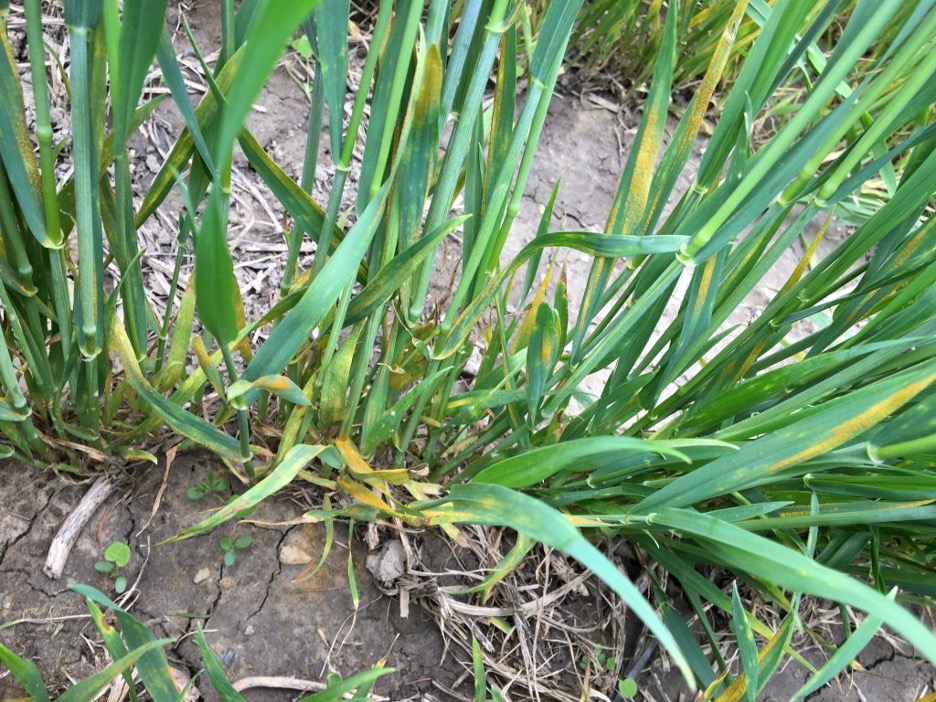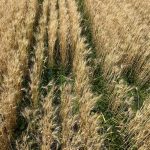Stripe rust has been showing up in winter wheat fields across southern Ontario this past week, and OMAFRA is recommending growers should continue to scout and monitor their fields closely.
The optimal temperatures for stripe rust development are 10-15°C with periods of high relative humidity but as observed in Ontario, stripe rust can develop at higher temperatures. Windy days will also help with spore dispersion. Stripe rust causes yellow to orange, blister-like lesions that are arranged in stripes on the leaf of the wheat plant.
If left untreated, stripe rust can cause significant yield reductions. In a recent OMAFRA Field Crop News report, Cereals Specialist Joanna Follings and Field Crop Pathologist Albert Tenuta said in 2016 and 2017, where growers had a high incidence of stripe rust that was not controlled through appropriate variety selection or fungicide application, yields were reported to be as low as 45 bu./ac.
Read Also

The forced Japanese-Canadian farmers of the Second World War
Manitoba’s sugar beet farms drew on displaced Japanese-Canadians from B.C. during the Second World War
Integrated Stripe Rust Management
Follings and Tenuta said the best defense against stripe rust is a combination of variety selection, scouting and timely fungicide applications. In Ontario winter wheat varieties, there are large differences in variety susceptibility to the disease. The authors suggest growers should check with their seed supplier and the Ontario Cereal Crops Committee performance trials for specific variety ratings (www.GoCrops.ca). Stripe rust ratings can be found under the head to head feature or check out the 2016 and 2017 historical reports.
If a variety has a rating of 6 or higher the variety is susceptible to stripe rust and will benefit from a fungicide application if stripe rust is present. If a variety is rated 3 to 5 then it is considered moderately resistant and should be scouted for stripe rust regularly during the growing season. If stripe rust is present and appears to be challenging the upper leaves of the canopy in these moderately resistant varieties Follings and Tenuta said growers may want to consider a fungicide application, particularly if the wheat is just at flag leaf.
As seen in 2017, some growers got caught with a severe disease infestation 10 days before the T3 fungicide application timing and had significant yield losses as a result. However, if stripe rust incidence and severity was low on these tolerant varieties and growers were less than a week away from fusarium fungicide timing then growers were able to wait. If a variety in your area has a rating less then 2 than this indicates that the variety is resistant against stripe rust and will likely not benefit from an early season fungicide application.
Now that the disease has been detected in the province, Follings and Tenuta suggest growers continue to scout fields. They said regular scouting assists in determining if disease infection is progressing up the plant and is critical in determining if a fungicide application is needed, and at what timing.
They said a lot depends on the level of infection, environmental conditions and crop susceptibility but by selecting resistant varieties and with regular crop scouting this disease can be managed effectively.
Most winter wheat fields in southwestern Ontario are at or beyond GS 45 (boot just visibly swollen). If winter wheat is beyond the swollen “head in boot” stage, a fungicide containing strobilurin should not be applied. For more information on fungicide selection visit the OMAFRA Crop Protection Hub.














